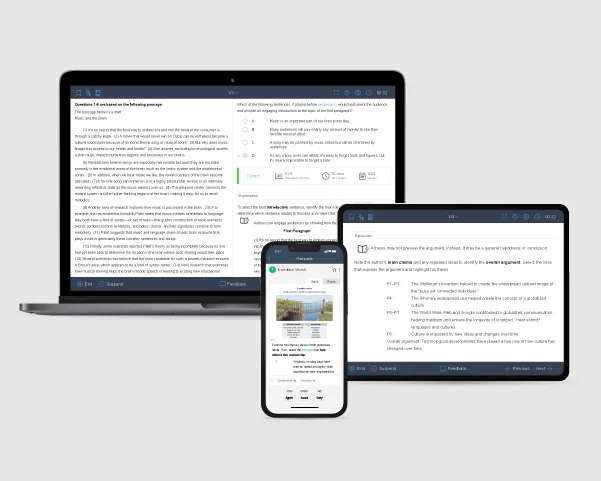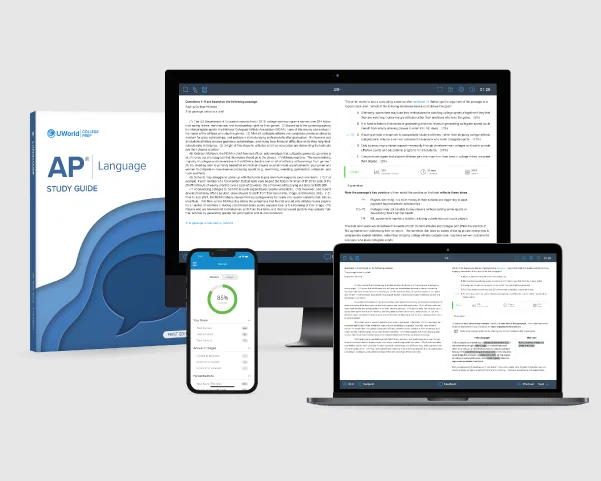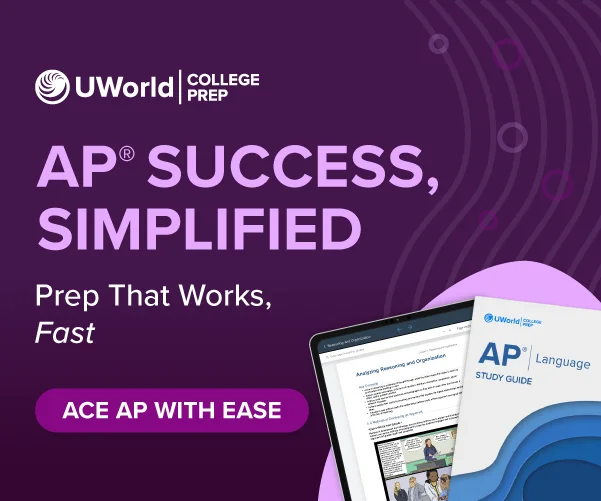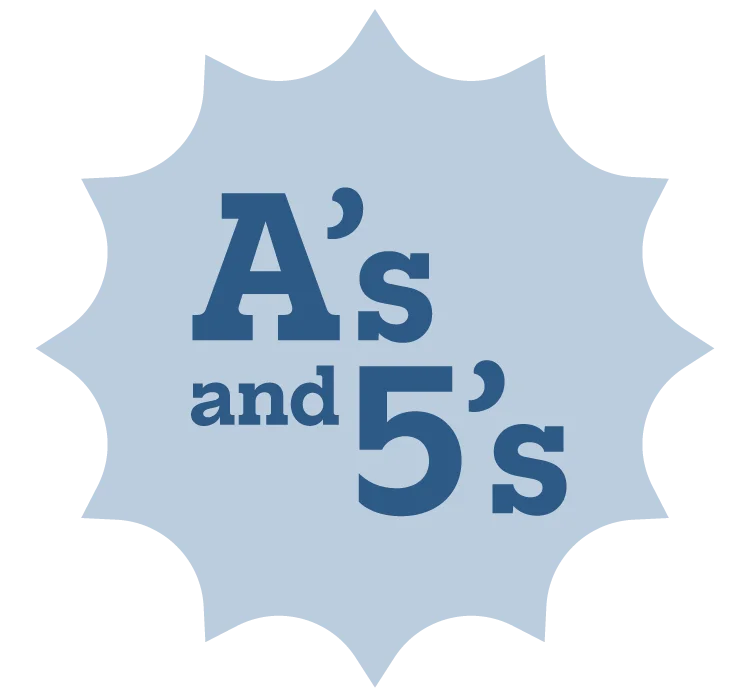The AP English Language and Composition course focuses on developing and refining evidence-based analytic and argumentative writing, critically examining and evaluating nonfiction texts, and understanding the choices writers make as they write and edit. Students must evaluate, synthesize, and cite research for their arguments. Also, they read and analyze the various components and techniques writers or speakers use to communicate effectively and how these rhetorical elements work in nonfiction texts from different fields and time periods, including images that can be read as text.
You might have this question in mind: "What college course is equivalent to an AP English language course?" The AP English Language course description aligns with an introductory college-level rhetoric and writing curriculum.
Understanding AP English Lang Units, Topics, and Key Concepts
The AP English Language and Composition course framework comprises two components — Big Ideas and Enduring Understandings, which include core course skills established by the College Board®. The Big Ideas are concepts that enable students to establish meaningful relationships between various ideas. The Enduring Understandings are long-term takeaways related to the Big Ideas.
To get a better picture, let's look at the Big Ideas & Enduring Understandings first, then the course skills.
What Are the Four AP English Language Big Ideas?
The Big Ideas are the basis of the AP English Language and Composition course, and they help students make connections between the concepts they learn. They are like threads that run through the whole course, so going back to them and using them in different ways helps students understand them better. Here are the Big Ideas and the Enduring Knowledge included in the AP English Language and Composition syllabus.
-
BIG IDEA 1: Rhetorical Situation (RHS)
Writers adapt their writing to specific situations, making deliberate choices about how to express themselves based on those circumstances.
-
BIG IDEA 2: Claims and Evidence (CLE)
Writers make assertions about AP Lang topics, rely on facts to back up the logic that justifies the assertion, and frequently acknowledge or reply to other arguments, some of which may oppose the writer's position.
-
BIG IDEA 3: Reasoning and Organization (REO)
Writers demonstrate how to comprehend a text's reasoning statements through the organization of the text and the utilization of evidence.
-
BIG IDEA 4: Style (STL)
The rhetorical situation guides writers in making strategic decisions concerning their writing style.
What are the AP English Language Course Skills?
The AP English Language course comprises eight skill categories and their associated essential knowledge assertions. They specify what students should understand and be able to do by the end of the course.
-
Skill Category 1: Rhetorical Situation (RHS) – Reading
This skill explains how the writer's decisions align with the context in which a piece of communication is produced and received.
You will learn how to:
- Identify and describe the components of the rhetorical situation: author’s motivation, audience, purpose, context, and message.
- Explain how an argument demonstrates a grasp of the audience's beliefs, values, or needs.
-
Skill Category 2: Rhetorical Situation (RHS) – Writing
This skill aids in strategically selecting textual elements to respond to the context in which a piece of communication is produced and received.
You will learn how to:
- Write introductions and conclusions appropriate to the purpose and context of the rhetorical situation.
- Demonstrate an understanding of the audience's beliefs, values, and needs.
-
Skill Category 3: Claims and Evidence (CLE) – Reading
This skill aids in identifying and describing the claims and evidence of an argument.
You will learn to:
- Identify and explain claims and evidence within an argument.
- Identify and describe the overarching thesis of an argument and any indication it provides of its structure.
- Explain how claims are qualified through modifiers, counterarguments, and alternative perspectives.
-
Skill Category 4: Claims and Evidence (CLE) – Writing
This skill aids in analyzing and selecting evidence to develop and refine a claim.
You will learn how to:
- Develop a paragraph that includes a claim and evidence supporting the claim.
- Write a thesis statement that requires proof or defense and may preview the argument's structure.
- Qualify a claim using modifiers, counterarguments, or alternative perspectives.
-
Skill Category 5: Reasoning and Organization (REO) – Reading
This skill helps describe an argument's reasoning, organization, and development.
You will learn how to:
- Describe the line of reasoning and explain whether it supports the argument's overarching thesis.
- Explain how the organization of a text creates unity and coherence and reflects a line of reasoning.
- Recognize and explain the use of development methods to accomplish a purpose.
-
Skill Category 6: Reasoning and Organization (REO) – Writing
Use organization and commentary to illuminate an argument's reasoning line.
You will learn how to:
- Develop a line of reasoning and commentary that explains it throughout an argument.
- Use transitional elements to guide the reader through the line of reasoning of an argument.
- Use appropriate methods of development to advance an argument.
-
Skill Category 7: Style (STL) – Reading
This skill explains how a writer's stylistic choice contributes to the purpose of an argument.
You will learn how to:
- Explain how word choice, comparisons, and syntax contribute to a text's specific tone or style.
- Explain how writers create, combine, and place independent and dependent clauses to show relationships between and among ideas.
- Explain how grammar and mechanics contribute to the clarity and effectiveness of an argument.
-
Skill Category 8: Style (STL) – Writing
This skill aids in selecting words and using elements of composition to advance an argument.
You will learn how to:
- Use words, comparisons, and syntax to convey a specific tone or style in an argument.
- Write sentences that clearly convey ideas and arguments.
- Use established conventions of grammar and mechanics to communicate clearly and effectively.

The Nine Units of AP English Language and Their Topics
The AP English Language course has nine units that help students build up the course skills they need for college credit. Since these skill categories represent the complex skills that proficient communicators demonstrate, students will benefit from multiple opportunities to develop these skills. Let's take a closer look at each unit included in the AP English Language and Composition syllabus, its associated skills, and the essential knowledge gained from it.
Class Periods ~ 15
Throughout this unit, students will benefit from frequent practice of writing paragraphs with a claim that requires proof or defense and textual evidence. By keeping the writing tasks in this unit focused on paragraphs rather than full essays, the likelihood of students receiving feedback on the quality of the claims they develop becomes more specific, consistent, and sustained.
Big Ideas Incorporated:
Big Idea 1: Rhetorical Situation How do you recognize and explain the elements of the rhetorical situation: writer, author’s motivation, audience, purpose, context, and message?
Big Idea 2: Claims and Evidence – How can you explain and support claims and evidence within an argument?
In this unit, you will learn:
- To identify the strategic choices of rhetoric, words, claims, and evidence in the given text.
- To develop a paragraph that includes a claim and evidence supporting the claim.
Class Periods ~ 15
In this unit, students will continue to develop proficiency in recognizing claims and evidence in other writers' arguments while emulating such models in their own paragraphs. In addition, they will begin identifying how effective writers appeal to and persuade their audiences while practicing such appeals in their own paragraphs. During this unit, students should build a collection of claims and evidence about a topic or issue to move beyond individual paragraphs and derive a thesis statement from the patterns they see within their collection.
Big Ideas Incorporated:
Big Idea 1: Rhetorical situation – How does an argument demonstrate an understanding of an audience's beliefs, values, or needs?
Big Idea 2: Claims and Evidence – How do you identify the overarching thesis in an argument?
In this unit, you will learn:
- To identify and explain how a text demonstrates an audience's values, beliefs, and needs.
- To identify and explain the claims and evidence within an argument.
- To create a text that includes a claim and evidence supporting it.
Class Periods ~ 15
In this unit, students should focus on improving the ways they explain and connect evidence and claims to establish a clear line of reasoning throughout their essays. Students will also become familiar with several traditional methods of development that writers have used for centuries to advance their arguments.
Big Ideas Incorporated:
Big Idea 2: Claims and Evidence – How to effectively source material through commentary to establish a logical relationship between the evidence and the claim it supports.
Big Idea 3: Reasoning and Organization – How does the line of reasoning work in a text, and how does it support the claim or argument?
In this unit, you will learn:
- To identify, describe, and explain claims in an argument.
- To recognize the method of development in an argument and whether the evidence provided supports the line of reasoning in that argument.
- To develop a text that includes a claim and evidence supporting the claim.
- To develop a line of reasoning and commentary that explains it throughout an argument.
Class Periods ~ 15
Students should have learned how to evaluate evidence, develop a thesis statement, and organize an argument before beginning this unit. The emphasis is on improving the argument's quality, interest, and power by writing introductions and conclusions that show a true grasp of the rhetorical situation. Additionally, students will practice a few additional development methods.
Big Ideas Incorporated:
Big Idea 1: Rhetorical Situation How do you identify and describe components of the rhetorical situation?
Big Idea 2: Claims and Evidence – How to use source material through commentary to establish a logical relationship between the evidence and the claim it supports?
Big Idea 3: Reasoning and Organization – How does the line of reasoning work in a text? How do you advance an argument in a text?
In this unit, you will learn:
- To create a thesis by including quotations, intriguing statements, anecdotes, questions, statistics, data, etc.
- To conclude the argument to a unified end, present its thesis, make connections, call the audience to act, suggest a change in behavior or attitude, etc.
- To use appropriate methods of development to advance an argument.
Class Periods ~ 15
The first four AP Lang units covered argument analysis and writing fundamentals. This unit looks at how to make an argument more coherent and become more aware of the effects of specific words and phrases in other people's arguments.
Big Ideas Incorporated:
Big Idea 3: Reasoning and Organization – How does the organization of a text create unity and coherence to reflect a line of reasoning?
Big Idea 4: Style – How do word choice, comparisons, and syntax contribute to a text's specific tone or style?
In this unit, you will learn:
- To use transitional elements to guide the reader through the line of reasoning of an argument.
- To strategically use words, comparisons, and syntax to convey an argument's specific tone or style.
Class Periods ~ 15
In this unit, students are asked to recognize and account for biases and limitations in the evidence they use in an argument. Students should develop an initial thesis statement and line of reasoning based on a relatively consistent pool of evidence, and then the teacher should introduce contradictory evidence that forces students to revise their thesis statements to account for it.
Big Ideas Incorporated:
Big Idea 2: Claims and Evidence – Does the overarching thesis of an argument indicate any information on the argument's structure?
Big Idea 4: Style – How do word choice, comparisons, and syntax contribute to a text's specific tone or style?
In this unit, you will learn:
- To identify the structure of an argument in text and develop a paragraph following its suit.
- To acknowledge the biases and limitations of the evidence and account for those limitations in their reasoning.
- To strategically use words, comparisons, and syntax to convey a specific tone or style in an argument and develop a thesis.
Class Periods ~ 15
Students should continue to revise claims (and occasionally the overarching thesis statement) in this unit to account for nuance, complexity, and contradictions in their sources. By the end of this unit, students should be expert consumers of evidence, able to quickly determine whether new evidence supports, refutes, or qualifies their claims, and then revise them accordingly using modifiers. This unit also covers how punctuation and design contribute to a writer's goal.
Big Ideas Incorporated:
Big Idea 1: Rhetorical situation – How are introductions and conclusions constructed with respect to the purpose and context of the rhetorical situation?
Big Idea 2: Claims and Evidence – How are claims qualified through modifiers, counterarguments, and alternative perspectives?
Big Idea 4: Style – How do grammar and mechanics contribute to the effectiveness of an argument?
A lack of understanding of the complexities of a subject or an issue can lead to oversimplification or generalization. How do you prevent that?
In this unit, you will learn:
- To use modifiers to qualify or limit the scope of an argument.
- To explain your essays with sentences that clearly convey ideas and arguments.
- To understand how writers create, combine, and place independent and dependent clauses to show relationships between and among ideas. effectively.
Class Periods ~ 15
Here, students have time to focus on skills they have not mastered. Only a few more essential knowledge statements are included in this penultimate unit.
Big Ideas Incorporated:
Big Idea 1: Rhetorical Situation – Writers often use comparisons (e.g., similes, metaphors, analogies, or anecdotes) in an attempt to relate to an audience. What kinds of syntax and biases can affect an audience’s belief system?
Big Idea 4: Style – How to use irony, modifiers, and different kinds of clauses to show relationships among ideas.
In this unit, you will learn:
- To strategically employ comparisons, word choice, and syntax to denote a specific tone or style of a text.
- To create, combine, and place independent and dependent clauses to show relationships between and among ideas.
Class Periods ~ 15
The last unit in this AP English Language course description focuses mainly on developing skills you have not mastered from the previous units. Your AP teacher can choose any text or skill that they feel is necessary to help you succeed in the AP Lang exam. This will help you focus on the skills and strategies that you have found tricky in the previous units and review them for the duration of this unit.
Big Ideas Incorporated:
Big Idea 2: Claims and Evidence – Transitions may be used to introduce counterarguments, and not all arguments explicitly address a counterargument. How do you assess an argument and refute or support it?
In this unit, you will learn:
- To explain how claims are qualified through modifiers, counterarguments, and alternative perspectives.
- To refute, rebut, or concede opposing arguments and contradictory evidence in a thesis.
- Review strategies taught in previous chapters that you have not mastered yet.
Achieve your dream score with our AP English Language prep course—offering a complete study guide, QBank with hundreds of practice questions, engaging interactive tools, and a performance dashboard that keeps you on track every step of the way.

Frequently Asked Questions
What are the prerequisites for AP English Language?
AP English Language and Composition has no prerequisites. Students should be able to read and comprehend college-level texts and write complete, grammatically correct sentences.
What are the important topics in AP English Language?
All AP Lang topics hold equal importance, as they carry almost identical weight in the course.
- Rhetorical Situation – Reading (11%–14%)
- Rhetorical Situation – Writing (11%–14%)
- Claims and Evidence – Reading (13%–16%)
- Claims and Evidence – Writing (11%–14%)
- Reasoning and Organization – Reading (13%–16%)
- Reasoning and Organization – Writing (11%–14%)
- Style – Reading (11%–14%)
- Style – Writing (11%–14%)
Is AP English Language an easy course?
AP English Language requires hard work, dedication, and consistent effort to succeed. The percentage of students who scored a 3 or higher on the AP English Language and Composition exam in 2024 was 54.6%, with an average score of 2.79. These statistics suggest that while AP English Language can be challenging, students often find it more manageable compared to AP Literature.
References
- (2024). Course Skills. AP English Language and Composition. Retrieved on January 10, 2025, from https://apcentral.collegeboard.org/courses/ap-english-language-and-composition.
- (2024). Unit Guides. AP English Language and Composition. Retrieved on January 10, 2025, from https://apcentral.collegeboard.org/media/pdf/ap-english-language-and-composition-course-and-exam-description.pdf.
- (2024). Student Score Distributions AP Exams-May 2024. Student Score Distributions AP Exams. Retrieved on January 10, 2025, from https://apstudents.collegeboard.org/about-ap-scores/score-distributions
Read More About AP English Language
It's no longer hard to score a 5! See what our experts say about scoring high on the AP English Language Exam in our guide and get all the key resources for your prep.
AP English Language Exam FormatGain an edge in your prep by mastering the exam format. Here's a breakdown of the AP English Language exam structure to help you start studying and achieve top scores.
AP English Language Scoring GuideLearn how the English Language and Composition exam is scored, from essay grading criteria to multiple-choice weighting, and get insights to elevate your score.
Best AP English Language Study Guide ComparisonCompare the best AP Eng Lang study guides! See how Kaplan, Barron's, and Princeton Review stack up against UWorld for comprehensive exam prep.
Best AP English Language Prep Course ReviewSearching for top AP Eng Lang prep courses? Read this review to compare the best courses and choose the perfect one for your success.
How to Self-Study for AP English LanguageLearn effective tips and strategies to self-study for the AP AP English Language & Composition exam. Build confidence, master core concepts, and achieve a high score independently too.




